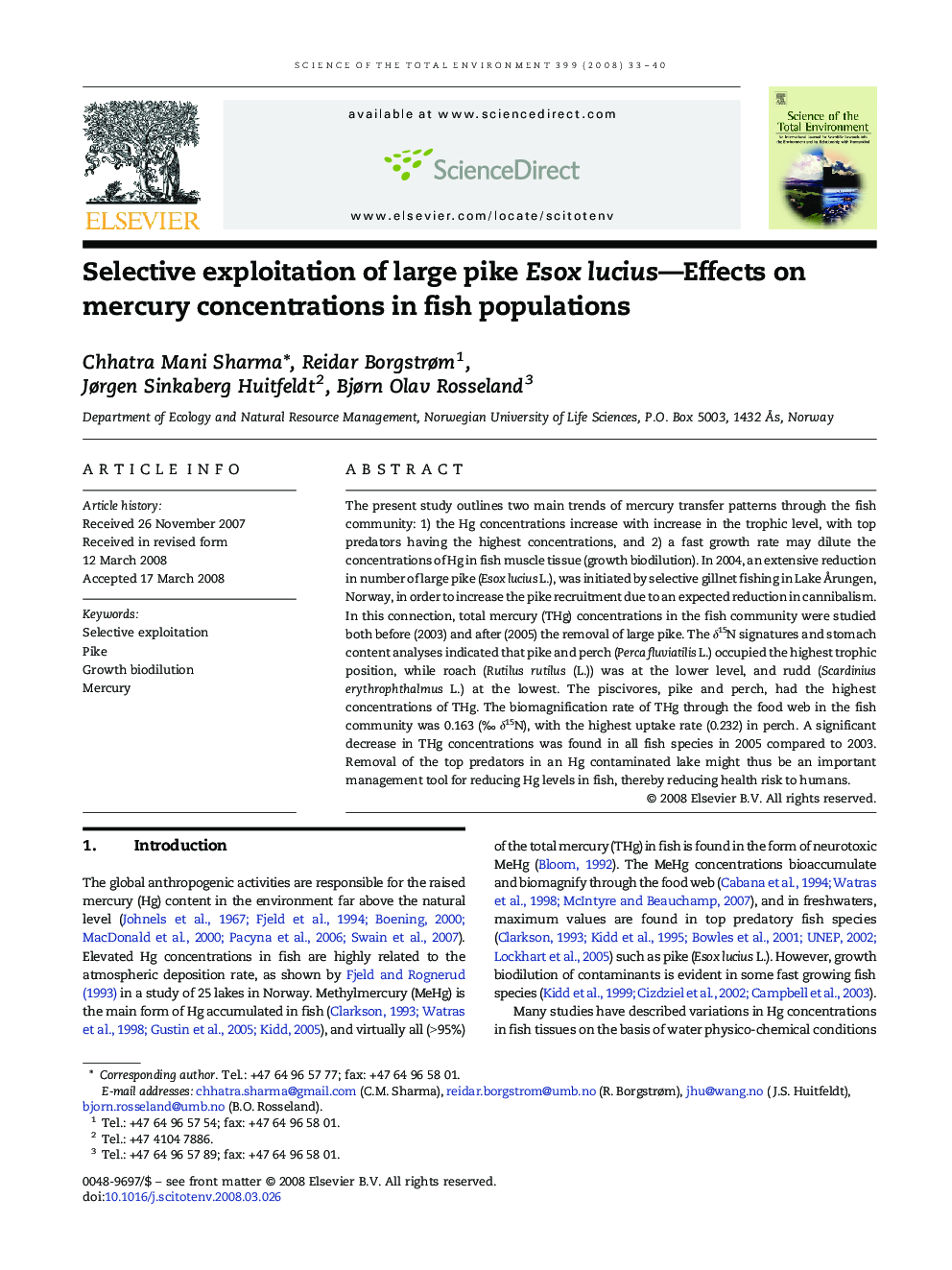| کد مقاله | کد نشریه | سال انتشار | مقاله انگلیسی | نسخه تمام متن |
|---|---|---|---|---|
| 4432609 | 1619920 | 2008 | 8 صفحه PDF | دانلود رایگان |

The present study outlines two main trends of mercury transfer patterns through the fish community: 1) the Hg concentrations increase with increase in the trophic level, with top predators having the highest concentrations, and 2) a fast growth rate may dilute the concentrations of Hg in fish muscle tissue (growth biodilution). In 2004, an extensive reduction in number of large pike (Esox lucius L.), was initiated by selective gillnet fishing in Lake Årungen, Norway, in order to increase the pike recruitment due to an expected reduction in cannibalism. In this connection, total mercury (THg) concentrations in the fish community were studied both before (2003) and after (2005) the removal of large pike. The δ15N signatures and stomach content analyses indicated that pike and perch (Perca fluviatilis L.) occupied the highest trophic position, while roach (Rutilus rutilus (L.)) was at the lower level, and rudd (Scardinius erythrophthalmus L.) at the lowest. The piscivores, pike and perch, had the highest concentrations of THg. The biomagnification rate of THg through the food web in the fish community was 0.163 (‰ δ15N), with the highest uptake rate (0.232) in perch. A significant decrease in THg concentrations was found in all fish species in 2005 compared to 2003. Removal of the top predators in an Hg contaminated lake might thus be an important management tool for reducing Hg levels in fish, thereby reducing health risk to humans.
Journal: Science of The Total Environment - Volume 399, Issues 1–3, 25 July 2008, Pages 33–40